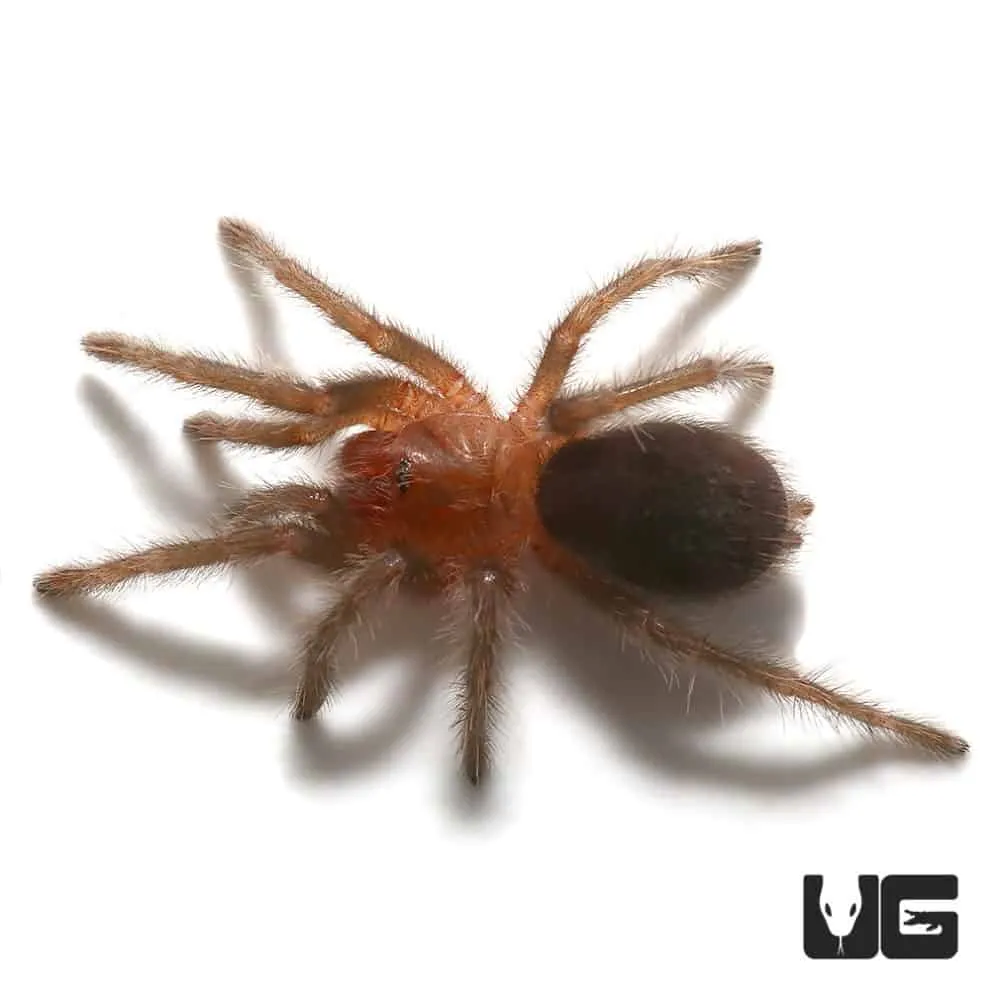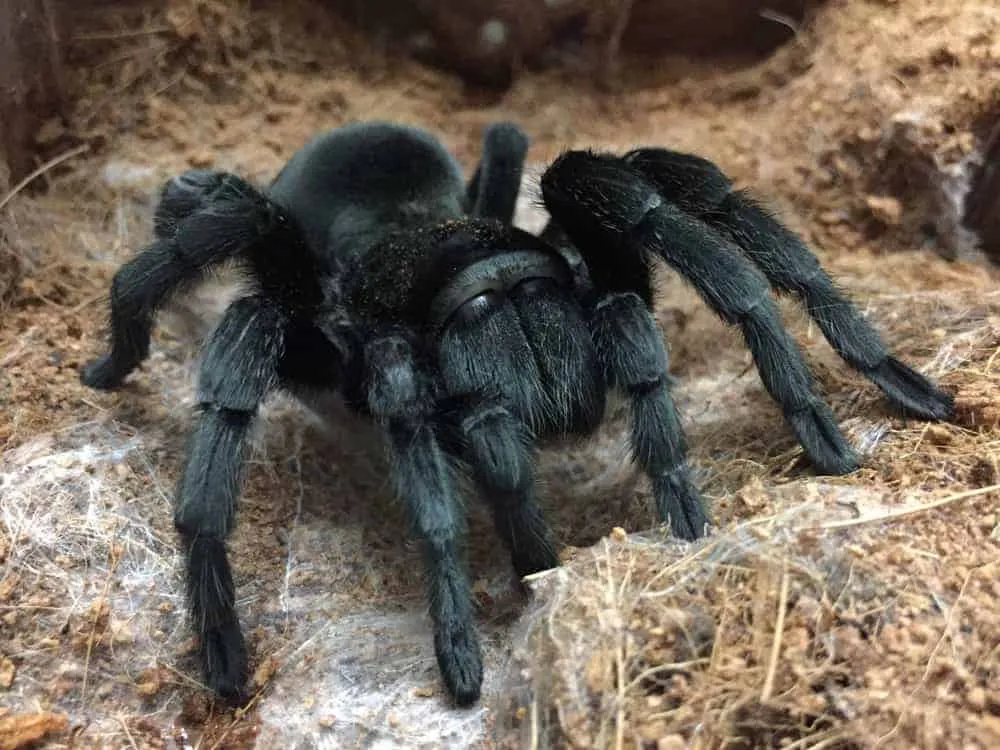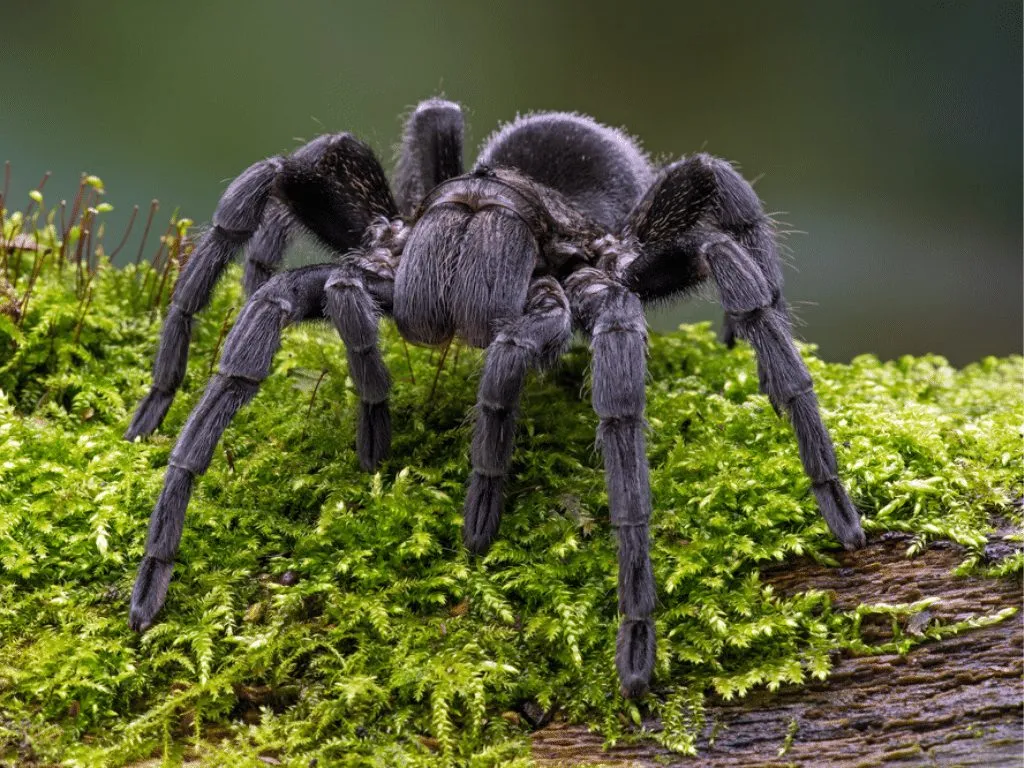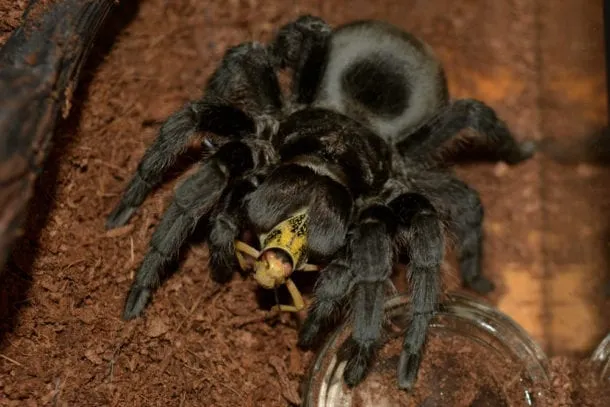What Makes the Brazilian Black Tarantula Docile
The Brazilian Black Tarantula (Grammostola pulchra) is often admired for its docile nature, making it a popular choice among tarantula enthusiasts. Unlike some other species, this tarantula tends to be less defensive and less prone to biting or exhibiting aggressive behavior. This docility, however, is not a guarantee, and individual personalities can vary. Factors contributing to their generally calm demeanor include their slower metabolism, which means they are less easily agitated, and their relatively relaxed defensive posture. They prefer to retreat rather than attack, making them ideal for those new to tarantula ownership or looking for a more manageable pet. Understanding what contributes to their docility is crucial for responsible ownership and ensures both the tarantula’s and the owner’s safety and well-being. Regular handling, when done properly, can further contribute to their calmness.
Temperament and Behavior
The temperament of a Brazilian Black Tarantula can be generally described as calm and composed. They are known for their slow movements and a tendency to prefer hiding over confrontation. When threatened, these tarantulas are more likely to flick hairs (urticating hairs) as a defense mechanism rather than biting. This behavior is a sign of stress and should be avoided by providing a secure and comfortable environment. Observing their behavior can give insights into their mood. A relaxed tarantula will often be found in an open area of its enclosure, while a stressed one might be hiding or displaying defensive postures. It’s crucial to respect their space and understand their signals to ensure a positive interaction. Consistency in care, a stress-free environment, and gentle handling (when comfortable) contribute significantly to maintaining a docile temperament.
Handling Guidelines

Handling a Brazilian Black Tarantula should be approached with caution and respect. While they are docile, they are still wild animals, and bites can happen, especially if they feel threatened or startled. Handling should be limited to short periods and only when the tarantula is calm and relaxed. Before handling, ensure the enclosure is secure to prevent escapes. Always handle them over a soft surface, such as a bed or a carpet, in case they fall. Never grab or restrain them; instead, allow them to walk onto your hand gently. Avoid sudden movements or loud noises that might startle them. Always wash your hands thoroughly before and after handling to remove any scents or residues that could affect the tarantula. It’s important to remember that not all tarantulas enjoy being handled; if your tarantula seems stressed or unwilling, it’s best to respect its boundaries and avoid handling.
Diet and Nutrition
Proper nutrition is essential for the health and well-being of your Brazilian Black Tarantula. In the wild, they are opportunistic feeders, consuming various insects and small invertebrates. In captivity, their diet should consist primarily of appropriately sized insects. Crickets, roaches, and mealworms are common choices. The insects should be gut-loaded before feeding to ensure they are nutritious. This means feeding the insects a diet rich in vitamins and minerals before offering them to your tarantula. Fresh water should always be available in a shallow dish. Overfeeding can be detrimental, leading to obesity and potential health problems. The frequency of feeding should be adjusted based on the tarantula’s size and age, with younger tarantulas requiring more frequent meals than adults. Providing a varied and balanced diet is crucial for promoting growth, molting, and overall vitality.
Feeding Frequency and Prey Selection
The feeding frequency for a Brazilian Black Tarantula depends on its age and size. Spiderlings should be fed two to three times a week, while juveniles can be fed once or twice a week. Adult tarantulas typically only need to be fed once every one to two weeks. Adjust the amount of food based on the tarantula’s body condition. A plump abdomen indicates a well-fed tarantula, whereas a thin abdomen may indicate that it needs more food. When selecting prey, ensure the insects are not larger than the tarantula’s body. Crickets and roaches are excellent choices, as they are readily available and provide a good source of protein. Always remove any uneaten prey within 24 hours to prevent them from stressing or harming the tarantula. Gut-loading the insects with nutritious foods before feeding is a crucial practice to enhance the nutritional value of the tarantula’s diet.
Habitat and Environment

Creating a suitable habitat is essential for the health and well-being of a Brazilian Black Tarantula. They require a secure and well-ventilated enclosure. The size of the enclosure should be appropriate for the tarantula’s size; a terrestrial species like the Brazilian Black Tarantula needs more floor space than height. The substrate should be deep enough for burrowing, consisting of a mixture of coco fiber, peat moss, and a little bit of vermiculite. This will help maintain the proper humidity levels and provide a natural environment for them. The enclosure should also include a water dish and a hide, such as a piece of cork bark or a plastic hide, where the tarantula can retreat and feel safe. Avoid placing the enclosure in direct sunlight or near any heat source that could overheat the environment. A well-maintained and stimulating environment reduces stress and promotes the tarantula’s overall well-being.
Enclosure Setup
Setting up the enclosure correctly is key to providing a comfortable and secure home for your Brazilian Black Tarantula. A good starting point is to select an enclosure that is at least three times the tarantula’s leg span in width and length. The enclosure should have a secure lid to prevent escapes. The substrate should be at least 4-6 inches deep, allowing the tarantula to burrow and feel secure. A water dish is essential, and it should be shallow enough to prevent the tarantula from drowning. Provide a hide, such as a piece of cork bark, a half-log, or a commercial hide, to give the tarantula a place to retreat and feel safe. Decorate the enclosure with artificial plants or other non-toxic items to add visual interest and enrichment. Ensure proper ventilation to prevent the buildup of mold or mildew. The enclosure setup should mimic the tarantula’s natural environment, creating a stress-free and stimulating habitat.
Temperature and Humidity
Maintaining the correct temperature and humidity levels is crucial for the health of your Brazilian Black Tarantula. They thrive in a temperature range of 75-85°F (24-29°C). Use a thermometer to monitor the temperature inside the enclosure. Supplemental heating may be necessary in cooler climates, but avoid direct heat sources that could burn the tarantula. The humidity level should be maintained between 65-75%. This can be achieved by misting the enclosure with water every few days, but avoid over-misting, which can lead to mold growth. Use a hygrometer to monitor the humidity levels. Proper ventilation is essential to prevent the buildup of excess moisture. The substrate should be slightly moist but not waterlogged. Regular monitoring and adjustments are essential to keep the environment optimal for your tarantula.
Lifespan and Growth

The Brazilian Black Tarantula has a relatively long lifespan. Females can live for 20 years or more, while males typically live for 5-7 years after reaching maturity. Their growth rate is dependent on factors like diet, temperature, and humidity. They grow through molting, shedding their exoskeletons. Young tarantulas molt more frequently than adults. During molting, the tarantula will typically lose its appetite and may appear lethargic. It’s crucial not to disturb the tarantula during this process, as they are very vulnerable. After molting, the tarantula’s new exoskeleton will be soft, and they should not be fed for a few days until the exoskeleton hardens. Knowing their growth stages and lifespan can help owners provide the best care and understand the life cycle of these fascinating creatures.
Molting Process
Molting is a natural process for tarantulas, allowing them to grow and shed their old exoskeletons. Before molting, the tarantula may become less active, stop eating, and may change its posture, sometimes lying on its back. The actual molting process can take anywhere from a few minutes to several hours. During this time, it’s critical to avoid disturbing the tarantula. Providing a slightly humid environment can help the molting process. After molting, the tarantula’s new exoskeleton will be soft and vulnerable, so avoid feeding it for several days until the exoskeleton hardens. You may notice the discarded exoskeleton, which is a complete replica of the tarantula, including all its hairs and mouthparts. Molting frequency decreases as the tarantula ages, with young tarantulas molting more often than adults. Understanding the molting process is vital for providing proper care and ensuring the tarantula’s health and well-being.
Health and Common Issues
Brazilian Black Tarantulas are generally hardy, but they can still be susceptible to certain health issues. One of the most common problems is dehydration, which can be prevented by ensuring a constant supply of fresh water. Another common issue is parasitic mites, which can be detected as small, moving dots on the tarantula or in the enclosure. These can often be treated with specialized mite control products. Injuries can occur from falls or handling; if you suspect an injury, consult with a veterinarian familiar with invertebrates. Always quarantine new tarantulas to prevent the spread of disease. Regular inspection of your tarantula and its environment can help in the early detection of health problems. Understanding common health issues will enable owners to maintain a healthy environment and seek appropriate veterinary care when needed.
Preventative Measures

Preventative measures are essential for maintaining the health and well-being of your Brazilian Black Tarantula. Ensure the enclosure is kept clean and free of uneaten food, which can attract mites and other pests. Regularly check the tarantula and the enclosure for signs of illness or parasites. Provide a balanced diet and avoid overfeeding to prevent obesity and related health issues. Maintain the correct temperature and humidity levels to prevent dehydration and other environmental problems. Avoid the use of pesticides or harsh chemicals near the enclosure. Quarantine new tarantulas to prevent the introduction of diseases. Educate yourself about tarantula care and common health problems. By implementing these preventative measures, you can significantly reduce the risk of health issues and ensure your Brazilian Black Tarantula lives a long, healthy life.
